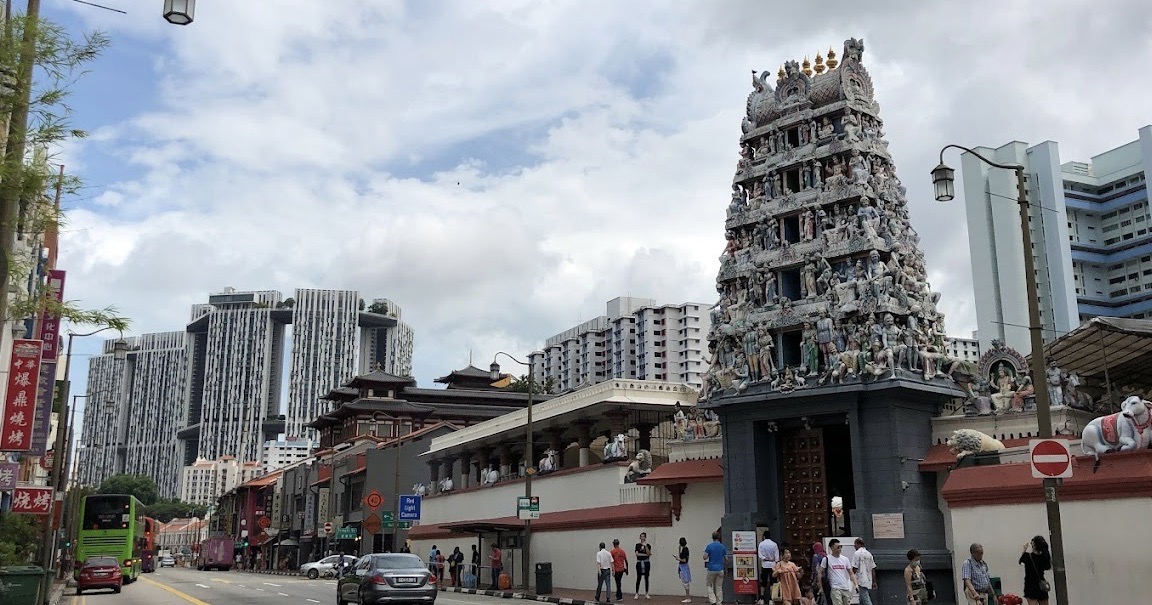Follow us on Telegram for the latest updates: https://t.me/mothershipsg
A former chief priest of Sri Mariamman Temple was sentenced to six years' jail on May 30, 2023, for misappropriating the temple's ceremonial jewellery at least 172 times to pawn them for S$2,328,760.
Kandasamy Senapathi, 39, committed the crimes over five years between audits by redeeming the jewellery and then pawning them again after the audits.
He pleaded guilty to two charges of criminal breach of trust by dishonest misappropriation and two charges of transferring criminal proceeds out of the country.
Another six charges were considered in sentencing.
Pawned jewellery off, but redeemed them in time for audits
Sri Mariamman Temple, along South Bridge Road, is the oldest Hindu Temple in Singapore. The Hindu Endowments Board manages the temple.
Kandasamy, an Indian national, was employed by the Hindu Endowments Board as a priest at the temple since December 2013 and was promoted to chief priest sometime in July 2018 when his predecessor retired.
He was entrusted with the keys and combination number code to the safe in the Temple's Holy Sanctum in 2014.
The safe contained about 255 pieces of gold jewellery with a book value of about S$1.1 million, which were used to adorn the Hindu deities during special prayers or temple events.
Regular external audits would be scheduled to ensure valuables in the safe were accounted for.
He was the only person with the keys and access to the jewellery safe.
Kandasamy would take pieces of jewellery to pawn shops but would redeem them after some time by using money he obtained from pawning other pieces of temple jewellery.
He would also redeem all the jewellery whenever before scheduled audits so that nothing would look out of place.
He began pawning jewellery in 2016 and pawned 66 pieces of gold jewellery from the temple on 172 occasions in that year alone.
Between Jan. 10 and Jun. 30, 2020, Kandasamy pawned 19 pieces of jewellery with a book value of approximately S$150,854 and received S$399,750 in pawn value.
Kandasamy received S$2,328,760 from 2016 to 2020.
He deposited some of the money into his bank account and remitted S$141,054 to India.
How his crimes came to light
His offences came to light when an audit was delayed in light of the Covid-19 circuit-breaker measures.
While arranging the audit, Kandasamy lied to a member of the temple's finance team that he did not have the key to the safe, claiming that he had left it in India when he returned to visit his family.
At the time, 17 pieces of jewellery were with two pawn shops.
However, the team member insisted on continuing the audit, and the temple was willing to break open the safe.
Kandasamy eventually confessed to pawning off the jewellery.
He borrowed about S$521,000 from friends to redeem the jewellery and resigned from his post because he felt guilty.
All the jewellery was accounted for, and the temple suffered no loss.
However, the team member made a police report, saying that even though the jewellery was returned, the Hindu Endowment Board wanted him to do so.
Claimed he needed money to help friend's mother
According to Shin Min Daily News, Kandasamy's lawyer claimed during mitigation that the defendant is a "simple person".
He said he lived in the temple all the while and only ate the simple fare the temple provided.
The lawyer said Kandasamy didn't spend the money to fund a lavish lifestyle, but claimed it was used to help a friend's cancer-ridden mother back in India.
He also pointed out that Kandasamy returned all the jewellery and pleaded with the judge for leniency.
The prosecutor argued that Kandasamy should not be let off lightly as his crimes showed a serious abuse of trust.
She highlighted that he was the temple's chief priest and the only person entrusted with the jewellery.
"He abused [the temple's trust] by retrieving the jewellery for a use outside their intended purpose – to be adorned on Hindu deities and not sitting on pawnshop shelves."
Top photo via Google Maps
If you like what you read, follow us on Facebook, Instagram, Twitter and Telegram to get the latest updates.

